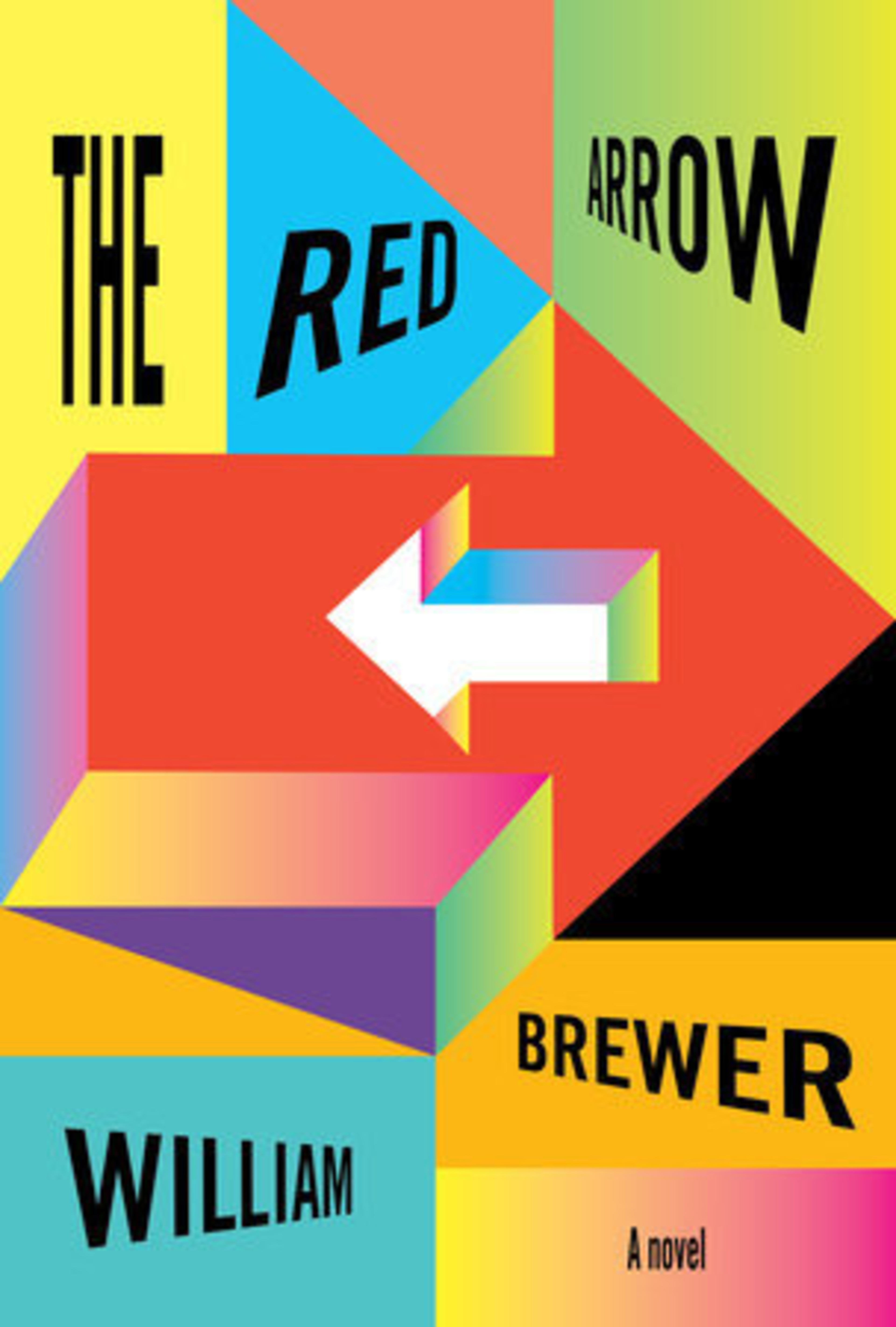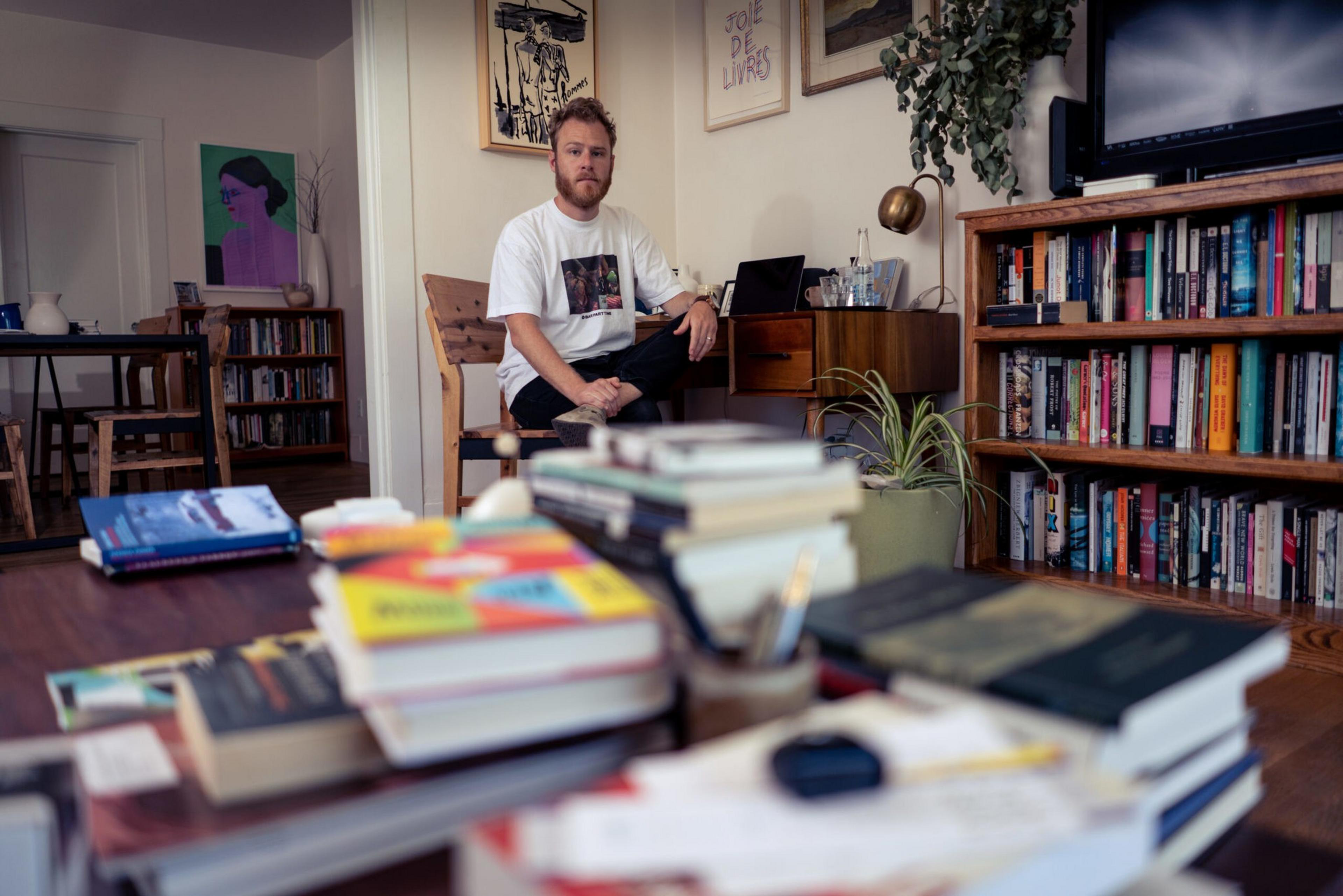Psilocybin mushrooms completely changed William Brewer’s life.
Brewer, an Oakland-based writer who had been suffering from depression for decades, found his condition worsening a few springs ago. “It was clear that I was probably going to die from this disease,” he said, referring to his depression.
Due to a sequence of fortunate events, Brewer got his hands on a copy of a book by acclaimed local author, Michael Pollan: How to Change Your Mind: What the New Science of Psychedelics Teaches Us About Consciousness, Dying, Addiction, Depression, and Transcendence. Then, as Brewer tells it, due to another stroke of fate, he was put in touch with a therapist who does psychedelic therapy here in the Bay Area.
Of his treatment, Brewer tells me: “Besides meeting my wife, it’s easily the most important thing that ever happened to me.” Shortly after his treatment, Brewer wrote his debut novel, The Red Arrow, over the course of one summer. It was released by Knopf in May.
On paper, Brewer and the unnamed narrator of The Red Arrow have an awful lot in common. The narrator is a young writer who is brought to the Bay Area for a writing fellowship (Brewer moved to the Bay Area after being awarded one of Stanford’s prestigious Stegner fellowships for poetry.) Like Brewer, the narrator grew up in West Virginia and suffers from intense depression, which he refers to as “the Mist,” and for which he undergoes an experimental, psychedelic treatment that heals him.
Unlike Brewer, however, the narrator in The Red Arrow is on a journey through Italy, attempting to locate the missing physicist for whom the protagonist has agreed to ghostwrite a memoir in order to buy his way out of debt for another book he owes his publisher.

The novel moves forward and backward in time in a way that Brewer said is meant to emulate the feeling of a deep and impactful trip. In crafting his book’s narrative arch, the author sought to find a cadence “that accurately reflected psychedelic experience” in a way that broke from stereotypical psychedelic aesthetics.
Or, to put it another way: “I wasn’t trying to make a book that felt like tie-dye.”
The Red Arrow moves swiftly across time and space, traveling through Italy, New York, West Virginia, and Northern California. Brewer’s writing is smart, his descriptions of “the Mist” horrifying and his imagery searing. Describing the protagonist and his girlfriend, Annie’s drive across the country, Brewer writes in a sprawling multi-page sentence:
…and then we rose again into the low hills that traced the edge of the San Pablo Bay, spitting us out into Richmond, then down along the edge of Berkeley, and to our right the waters became the San Francisco Bay and both of us stared wide eyed and childlike at its shining azure madness, and then the infinite Pacific framed in the Golden Gate, its grandness and its indifference to the world, and then we crossed the Bay Bridge and I counted the mammoth container ships crawling in and chugging out and I wondered when the last time was that I had a mind quiet enough to count tankers…
— The Red Arrow, William Brewer
In the novel, Brewer was interested in exploring a sense of optimism he feels here in the Bay Area, and how that optimism serves as a backdrop to some of the narrator’s darkest days. Brewer sees “a fascinating tension [of being] in a space of immense beauty while experiencing equally immense psychological pain.”
Before writing The Red Arrow, Brewer had been working on another novel for a few years, but it had stalled out, and after undergoing his treatment, he found himself writing in a new direction. “After…my mind was completely changed and I was liberated from this disease, I also just realized that I was writing with really what felt like both my hands tied behind my back,” Brewer said. “My mind was so lost in self-hatred and confusion, a disconnection from my imagination that, you know, whatever I worked on, no matter how good it was, it was never going to be as good as it could have been.”
Brewer was a creative child. Growing up, he spent much of his free time working on visual art projects. He reflects on the way that as a young child, he wouldn’t overthink it if someone handed him a crayon. But as time wore on, he found it more difficult to enter that egoless space. “Depression made me lose it at an accelerated rate,” he added.
After undergoing his psilocybin treatment, Brewer found himself seeing the world differently, existing in what he refers to as “an egoless space,” which he sees as the space from which art emerges. Brewer describes the experience of “ego death” during his treatment, and says that “when I died during that journey, there was something deathless on the other side of it, and it was a kind of centerless, total awareness.”

Over the past few years, there has been a growing interest in psychedelics and alternative treatments for depression. From the publication of Pollan’s How to Change Your Mind,and the publication of Ayelet Waldman’s similar exploration—A Really Good Day—to the expansion of Ketamine clinics (opens in new tab), the research coming out of Multidisciplinary Association of Psychedelic Studies (MAPS (opens in new tab)), and the development of The UC Berkeley Center for the Science of Psychedelics (BCSP) (opens in new tab), much of this innovation is taking place right here in our back yard.
Yet, as Brewer sees it, “I think a lot of people are still carrying pretty dated perceptions about these molecules.”
It remains to be seen how psychedelic treatments will be embraced beyond the Bay Area and other enclaves sympathetic to its promise. Psilocybin treatments are still conducted “underground” and may not be accessible to everyone. Other experimental treatments—such as those proffered by “The Pied Piper of Psychedelic Toads (opens in new tab)”—have both enthusiastic proponents and vehement critics.
And while books such as those by Pollan, Waldman and Brewer point to a broadening acceptance of the potential for psychedelic medicine, other questions remain as to whether these compounds will simply be commodified by big pharma (opens in new tab).
But for those like Brewer and the narrator of his novel, who have experienced such treatments, the proof is in the lived experience. When asked how he feels about psychedelics now, Brewer unequivocal:
“I feel that I owe my life to them.”
‘The Red Arrow’ is out now via Knopf (opens in new tab), an imprint of Penguin Random House.
